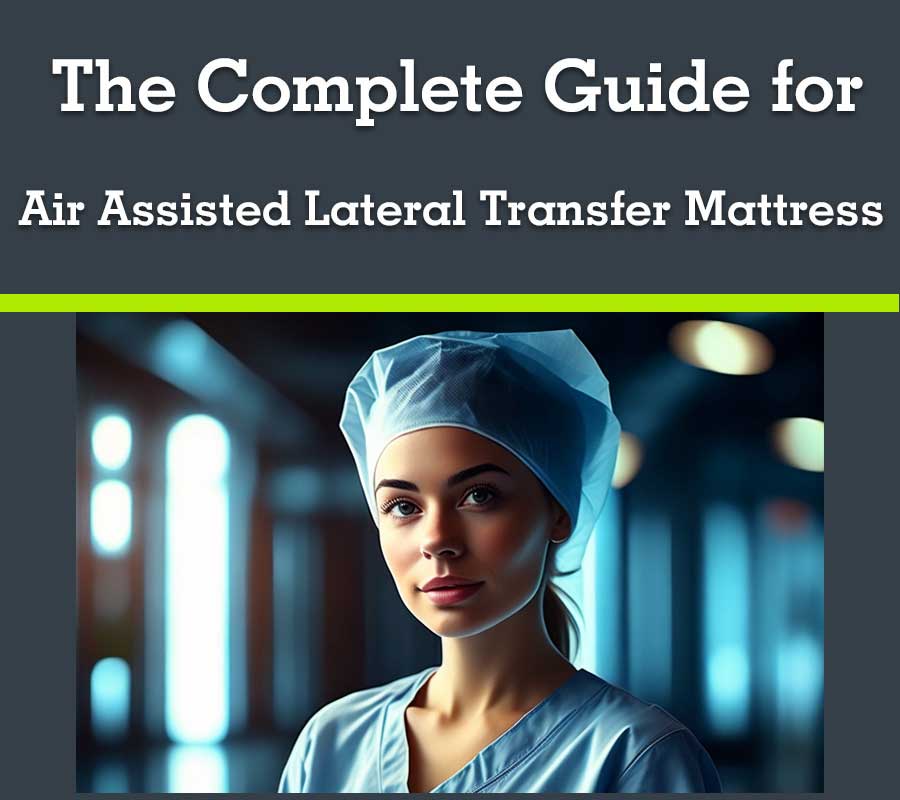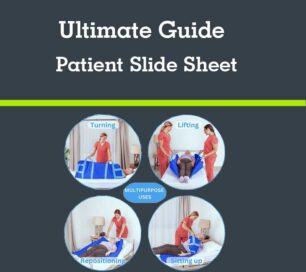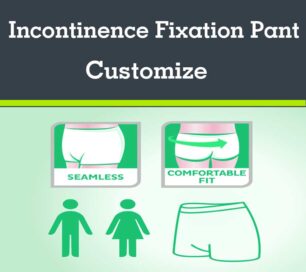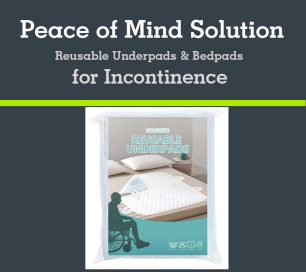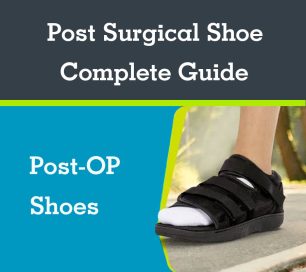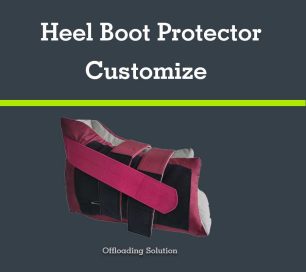Last Updated on 2 months ago by admin
Air-Assisted Lateral Transfer Mattress: The Innovative Patient Transfer Solution for B2B Healthcare
In today’s fast-paced healthcare environment, safe and efficient patient transfers are critical to quality care. Traditional manual transfer methods are labor-intensive, time-consuming, and pose risks to both patients and healthcare staff. Enter the Air-Assisted Lateral Transfer Mattress, a cutting-edge medical air mattress designed to streamline patient handling. This article explores the benefits, applications, and value of this innovative solution for hospitals, nursing homes, and rehabilitation centers. If you’re seeking a reliable patient transfer mattress for your institution, this guide will provide actionable insights.
What is the air assisted lateral transfer mattress system?
Lateral patient transfers are a high-risk task that can cause injuries for caregivers and induce anxiety and discomfort in patients. A variety of lateral transfer aids are available to lessen the strain and smooth the transition, air-assisted transfer aids being the most preferred and caregiver-approved. The Metacare Air Lateral Transfer Mattress System is designed to facilitate safe, comfortable, and convenient transfers and repositioning for both patient and caregiver.
The Metacare Air Transfer Mattress is the number one choice of hospitals for patient transfers, boosting, turning, and positioning.We offer a wide range of aids for lateral transfers and the repositioning of residents and patients in bed.
With the revolutionary Metacare air-assisted technology, the mattress – and the patient – float on a cushion of air, so caregivers can safely transfer patients without lifting or straining. Virtually eliminating the injuries related to transfers and positioning, significantly helps to improve staff satisfaction and retention, while reducing direct and indirect worker’s compensation costs.
The disposable mattresses are designed for single-patient use, reducing the risk of infection and eliminating the need for cleaning between patients; these mattresses are also made of material designed to reduce shear and friction on the patient. Loop handles along the sides are color coded to the mattress size for easy identification, and provide caregivers with a variety of grip positions to choose from. Buckle-like straps help secure the patient to the mattress to prevent them from rolling off and add to their sense of security while moving. This product can only be sold to clinicians for acute and subacute care and is not intended for home care.
Applications of Air-Assisted Lateral Transfer Mattress in Healthcare
In the B2B medical equipment market, the Air-Assisted Lateral Transfer Mattress serves a wide range of settings. Key applications include:
- Hospital Operating Rooms: Pre- and post-surgery transfers demand precision. These mattresses ensure smooth patient movement, reducing discomfort for anesthetized patients.
- Nursing Homes and Long-Term Care: For mobility-impaired elderly patients, they enable safe bed-to-wheelchair transfers, easing caregiver strain.
- Emergency Rooms and ICUs: In critical situations, rapid transfer of heavy patients is vital. Air-assisted technology handles high-weight cases without additional equipment.
- Rehabilitation Centers: Supports patient positioning during physical therapy, aiding recovery.
For instance, a large hospital adopting an air-assisted patient transfer mattress system reduced transfer times from 5 minutes to 1 minute, boosting overall care efficiency. If your facility faces staffing shortages or patient safety challenges, this solution is a strategic B2B investment.
How to Choose the Right Air-Assisted Lateral Transfer Mattress Supplier
When procuring an air-assisted lateral transfer mattress, B2B buyers should consider:
- Brand Reputation: Opt for established manufacturers like HoverMatt or Arjo,Metacare known for clinically validated products.
- Customization Options: Suppliers offering varied sizes, weight capacities, and accessories (e.g., pumps or carry bags) meet diverse facility needs.
- Compliance and Certifications: Ensure products meet FDA, CE, or local medical regulations to mitigate procurement risks.
- After-Sales Support: Reliable suppliers provide training, maintenance, and warranties to maximize ROI.
- Price vs. Value: While upfront costs may be higher, long-term labor savings enhance cost-effectiveness. Compare quotes from multiple suppliers.
B2B buyers can search “Air-Assisted Lateral Transfer Mattress wholesale” or engage professional medical equipment platforms for quotes.
GLOBAL AIR-ASSISTED LATERAL TRANSFER MATTRESSES MARKET MANUFACTURERS
Global Air-assisted Lateral Transfer Mattresses Market 2018-2023 report arrays niche data related to the global Air-assisted Lateral Transfer Mattresses market. Further, it gives a gist of the product price, sales revenue, product specification, product cost, and product description. Fundamental details of the Air-assisted Lateral Transfer Mattresses industry such as import/export data, current market scenario, various business strategies, and most recently launched technologies are narrated in the report.
A comprehensive study of the manufacturing process, latest challenges, market drivers, Global Air-assisted Lateral Transfer Mattresses market driving force, market restraints, various deployment models, consumer demand, and manufacturing base is performed. Furthermore, the report delivers current affairs in the Global Air-assisted Lateral Transfer Mattresses market, market size, growth opportunities of the Global Air-assisted Lateral Transfer Mattresses market, market revenue, and Air-assisted Lateral Transfer Mattresses market statistics. Globally, the Air-assisted Lateral Transfer Mattresses market is categorized according to product types, applications, Global Air-assisted Lateral Transfer Mattresses market key manufacturers, and geographical regions.
The patient lateral transfer market is currently experiencing growth due to an increasing demand for healthcare services, rising numbers of elderly patients, and an increased focus on patient safety. Manufacturers are developing innovative solutions that are easy to use, comfortable for patients, and reduce the risk of injury. Additionally, the market is being driven by the adoption of new technologies and the increasing prevalence of chronic diseases. Overall, the patient lateral transfer market is expected to experience continued growth in the coming years as the healthcare industry continues to evolve and expand.
Market Segmentation 2023 – 2030:
Patient lateral transfer market types refer to the different methods used to move patients from one location to another. Air-assisted transfer devices are used to lift and move patients using a cushion of air, while slide sheets are used by caregivers to slide and reposition patients with ease. These transfer devices are designed to minimize the risk of patient injury and reduce strain on healthcare workers.
Patient lateral transfer market applications are numerous, with hospitals and ambulatory surgical centers being among the primary users of these transfer devices. These facilities require safe and efficient methods of transporting patients between rooms, departments, and floors. Other healthcare settings that may benefit from these transfer devices include rehabilitation centers, long-term care facilities, and home healthcare providers. Overall, the patient lateral transfer market is a crucial component of modern healthcare, helping to improve patient outcomes and minimize the risk of caregiver injuries.
Major leading regions covered in this research study are as follows:
Latin America, Europe, North America, Middle East and Africa and South East Asia.
- Metacare Industrial Ltd(China)
Major players in the Global Air-assisted Lateral Transfer Mattresses market are described:
- Mcauley Medical and Inc. (US)
- Scan Medical (US)
- Haines Medical (AU)
- Samarit Medical AG (ES)
- Blue Chip Medical Products and Inc. (US)
- Hill-Rom Holdings and Inc (US)
- Air-Matt and Getinge AB (SE)
- Hovertech International (US)
- Airpal and Inc (US)
- Stryker Corporation (US)
- Sizewise (US)
- Patient Positioning System LLC (US)
- Medline Industries and Inc (US)
- EZ Way
Whereas Global Air-assisted Lateral Transfer Mattresses Market product types covered are:
- Hospital
- Clinic
- Others
Metacare Air-assisted Lateral Transfer Mattress
Metacare Medica Supply Air Powered Lateral Transfer mattress (needs a compatible Air Supply,100% compatible with other manufacturer’s Lateral Transfer Air Blowers) was the first and remains the leading product for innovation in keeping patients and caregivers safe for well over three decades with their air-assisted lateral patient transfer system. Their range of widths sizes is the broadest on the market and they boast the highest possible quality control of their transport system, offering the best combination of function, warranty, support, and cost-effectiveness in the industry.
Metacare air-powered lateral transfer mattress is attached by a hose to the air motor that inflates the air mattress, comfortably cradling the patient, while constantly forcing air to the bottom, which is designed with many small air hole perforations. Once fully inflated, the air is released through the holes, creating a cushion of air (similar to that of an air hockey table), that reduces the sheer force required to start moving a patient from one position to another. This greatly reduces the effort by up to 90% and overcomes the problem of the repetitive strain that a caregiver faces when moving multiple patients during the day. They can effortlessly move the patients with only one or two staff personnel, where normally it would take 4 to sometimes 8 to complete the transfer.
Benefits of using the Air Transfer Mattress:
- Disposable, single-patient-use mattresses for reduced infection risk
- Heated-sealed construction – Eliminates holes that are potential bacteria pathways
- More comfortable patient experience – Reduces skin shear
- Lowers caregiver injuries – Reduces force required to move patients by 80-90%
- Patient straps to both ensure safety and enhance the sense of security
- Color-coded by size loop handles for multiple grip positions to suit caregiver preference
- Constant air supply cushions patient and reduces push-pull
- Improves caregiver productivity – Requires fewer caregivers for improved staff efficiency
Get lateral assist device samples
Company factories or manufacturers such as Metacare offer various solutions for this process, including transfer sheets, slide sheets, air-assisted lateral transfer devices, and lifts. These companies can help grow the patient lateral transfer market by providing innovative, safe, and efficient products that improve patient outcomes and reduce caregiver injury rates. contact them to get a sample or for Product customization or become wholesale dealer.
Air-assisted Lateral Transfer Mattresses Trends and Opportunities for Growth
Air-assisted Lateral Transfer Mattresses by Application (Hospital, Clinic, Others), by Types (Disposable Air-assisted Mattresses, Reusable Air-assisted Mattresses), by North America (United States, Canada, Mexico), by South America (Brazil, Argentina, Rest of South America), by Europe (United Kingdom, Germany, France, Italy, Spain, Russia, Benelux, Nordics, Rest of Europe), by Middle East & Africa (Turkey, Israel, GCC, North Africa, South Africa, Rest of Middle East & Africa), by Asia Pacific (China, India, Japan, South Korea, ASEAN, Oceania, Rest of Asia Pacific) Forecast 2025-2033
The global market for air-assisted lateral transfer mattresses is experiencing robust growth, driven by an aging population, increasing prevalence of chronic diseases requiring assisted mobility, and a rising demand for improved patient safety and comfort in healthcare settings. The market’s expansion is further fueled by technological advancements leading to more efficient and user-friendly designs, along with a growing awareness among healthcare professionals regarding the benefits of these mattresses in reducing patient handling injuries and improving overall care quality. While the precise market size for 2025 is unavailable, a reasonable estimate based on industry growth trends and the reported CAGR would place it at approximately $250 million. This figure projects to a substantial increase by 2033, driven by continuous technological innovation, expanding healthcare infrastructure in developing economies, and the increasing adoption of these mattresses across various care settings, including hospitals, nursing homes, and rehabilitation centers.
However, the market faces certain restraints. High initial investment costs associated with these specialized mattresses can be a barrier to adoption, particularly for smaller healthcare facilities with limited budgets. Furthermore, the availability of alternative transfer methods and potential concerns about mattress maintenance and hygiene might also influence market growth. To overcome these challenges, manufacturers are focusing on developing cost-effective solutions and promoting the long-term cost benefits of reducing patient handling injuries and associated healthcare expenses. Moreover, emphasis is placed on designing mattresses with improved durability and easy-to-clean materials, thereby addressing hygiene concerns and ensuring prolonged product lifespan. The competitive landscape is characterized by a mix of established players and emerging companies, driving innovation and offering diverse product choices to meet specific patient needs and healthcare facility requirements.
Air-assisted Lateral Transfer Mattresses Concentration & Characteristics
The air-assisted lateral transfer mattress market exhibits moderate concentration, with several key players holding significant market share, but no single dominant entity. This allows for competitive innovation and pricing. Millions of units are sold annually, representing a substantial market size with significant growth potential.
Concentration Areas:
North America and Europe currently hold the largest market share due to high healthcare expenditure and technological advancements.
Developing economies in Asia-Pacific are experiencing rapid growth due to increasing healthcare infrastructure development and rising geriatric populations.
Characteristics:
Innovation: The market is characterized by ongoing innovation in materials, design, and functionality, focusing on improved patient comfort, ease of use for healthcare professionals, and reduced risk of injury during patient transfers. This includes the integration of advanced pressure-relief technologies and automated features.
Impact of Regulations: Stringent safety and efficacy regulations concerning medical devices significantly influence market dynamics. Compliance with these regulations is crucial for manufacturers to operate successfully.
Product Substitutes: While air-assisted lateral transfer mattresses provide a distinct advantage in patient handling, they face competition from other patient transfer aids, such as slide sheets, transfer boards, and mechanical lifts.
End-User Concentration: Hospitals and long-term care facilities are the primary end-users, driving the majority of market demand. The concentration is high within these sectors.
Level of M&A: The market has witnessed a moderate level of mergers and acquisitions, with larger companies strategically acquiring smaller players to expand their product portfolios and market reach. This activity is expected to continue.
Air-assisted Lateral Transfer Mattresses Trends
The air-assisted lateral transfer mattress market is experiencing robust growth, projected to reach XXX million units by 2033. Several key factors contribute to this upward trend. The aging global population necessitates efficient and safe patient handling solutions, driving demand for these mattresses. Technological advancements, such as improved air cell designs for enhanced pressure redistribution and easier operation, are contributing to market expansion. The increasing prevalence of chronic conditions, like obesity and mobility limitations, further fuels the need for specialized transfer equipment. Furthermore, healthcare providers increasingly prioritize patient safety and the reduction of healthcare-associated injuries, making air-assisted transfer mattresses a valuable investment. The rising awareness of the benefits of these mattresses among healthcare professionals and patients themselves contributes to this growth. Regulatory changes mandating improved patient handling protocols in certain healthcare settings also create positive momentum. Finally, the introduction of innovative features, like integrated scales for accurate weight assessment during transfers, is further driving the market’s growth. The market’s expansion is further fueled by the increasing focus on patient-centered care and the adoption of ergonomic practices in healthcare settings to reduce workplace injuries among healthcare personnel. The increasing investments in research and development focusing on improving the functionality and efficacy of these mattresses are also adding to the market’s growth trajectory.
Key Region or Country & Segment to Dominate the Market
- North America: This region currently holds the largest market share, driven by high healthcare expenditure, advanced healthcare infrastructure, and a large aging population. The region’s robust regulatory framework fosters innovation and safety standards, further boosting adoption rates. The presence of key players and advanced healthcare practices in the US and Canada contributes to the dominance of this region.
- Europe: Similar to North America, Europe demonstrates strong market growth due to factors like aging demographics and increasing healthcare spending. The presence of stringent regulations ensures product quality and safety, while the adoption of advanced healthcare technologies further drives demand.
- Asia-Pacific: This region is witnessing exponential growth, primarily fueled by the rapidly expanding elderly population, increasing healthcare infrastructure development, and rising disposable incomes. Government initiatives promoting improved healthcare quality contribute to market expansion. The growing awareness of patient safety and ergonomic practices among healthcare professionals also stimulates demand for these specialized mattresses.
The hospital segment dominates the market, accounting for the highest volume of purchases due to high patient turnover and specialized needs. Long-term care facilities follow closely, reflecting the growing number of elderly individuals requiring assisted care.
Air-assisted Lateral Transfer Mattresses Product Insights
Air-assisted lateral transfer mattresses offer significant advantages over traditional methods. Their design minimizes patient shear and friction during transfers, lowering the risk of skin injury and promoting patient comfort. They typically feature adjustable air cells to provide customized support and pressure relief, accommodating patients of varying sizes and conditions. Many models offer integrated features such as handles for easier maneuverability and scales for accurate patient weight assessment, enhancing safety and efficiency. The inherent mobility and ease of use make them adaptable to various clinical settings.
Report Coverage & Deliverables
This report provides a comprehensive analysis of the air-assisted lateral transfer mattress market, segmenting it by region (North America, Europe, Asia-Pacific, Rest of the World), product type (single-patient, multi-patient), and end-user (hospitals, long-term care facilities, rehabilitation centers, etc.). The regional analysis provides insights into market dynamics, growth drivers, and key players in each region. The product type segmentation highlights the different features and applications of various mattresses. The end-user segmentation analyzes the demand for these mattresses across different healthcare settings. Each segment’s analysis provides market size, growth forecasts, key trends, and competitive landscape data.
Driving Forces: What’s Propelling the Air-assisted Lateral Transfer Mattresses
- Aging Global Population: The increasing number of elderly individuals requiring assisted care fuels significant demand.
- Rising Prevalence of Chronic Diseases: Conditions limiting mobility increase the need for safe patient handling solutions.
- Technological Advancements: Innovations in air cell technology and design enhance patient comfort and safety.
- Focus on Patient Safety: Healthcare providers prioritize minimizing patient injuries during transfers.
Challenges and Restraints in Air-assisted Lateral Transfer Mattresses
- High Initial Investment Costs: The relatively high price compared to traditional methods might limit adoption in resource-constrained settings.
- Maintenance and Repair: Regular maintenance and potential repair costs can be a concern for some healthcare facilities.
- Space Constraints: In some healthcare environments, the physical size of the mattress may pose a limitation.
- Competition from Alternative Transfer Aids: Slide sheets and other transfer aids compete for market share.
Emerging Trends in Air-assisted Lateral Transfer Mattresses
- Integration of Smart Technology: Features like sensors for monitoring patient pressure and automated transfer assistance are becoming more common.
- Sustainable Materials: There’s a growing demand for environmentally friendly and recyclable materials in mattress construction.
- Modular Designs: Mattresses with customizable configurations and add-on features are gaining popularity.
Growth Catalysts in Air-assisted Lateral Transfer Mattresses Industry
The global air-assisted lateral transfer mattress market is fueled by the increasing prevalence of chronic diseases and an aging population. Government initiatives promoting healthcare improvement and patient safety play a critical role in accelerating market growth. The rising adoption of advanced technologies, coupled with an escalating awareness of the importance of safe patient handling, further enhances market expansion. Growing healthcare expenditure and the subsequent investment in high-quality medical equipment also contribute to increased market demand.
Air-assisted lateral transfer mattress Steps to be taken to complete patient transfers task safely
Here is the complete guide on how to use an air-assisted lateral transfer mattress
Name of Task: Air-Assisted Device Lateral Transfer
Position/Job : 2 or more Healthcare Workers
Department/Unit: All patient care areas
Equipment and/or Tools required:
- Air-assisted Devices:
- Mattress (e.g. Metacare)
- Riser
- Access to the electrical outlet
Personal Protective Equipment Required:
- Appropriate footwear. Isolation
- precautions if required
Considerations:
- Additional types of equipment are necessary for transferring bariatric patients on the air-assisted device.
- Inspection of the air-assisted device and air supply unit should be done, Any problems should be identified to your manager, and the equipment removed from use until the problem is rectified.
- For patients on Additional Precautions (isolation/blood or body fluids exposure), a single patient-use air-assisted device or a disposable waterproof cover sheet would be recommended and can remain in the patient environment after cleaning for reuse on the same patient.
Air-assisted lateral transfer mattress steps
- Remove the air-assisted device from the storage cart and lay the mattress flat beside the patient. Position the mattress correctly by using head and foot indicators on the top side of the mattress.
- Release the buckles on the mattress and lay the straps open.
- Place a disposable waterproof cover on the air-assisted device if required.
- Metacares are positioned on either side of the air-assisted device/patient. If on the floor, kneel on one leg with back as straight as possible. If the patient is in bed, stand using a wide base of support with one foot in front of the other. Metacares are positioned on either side of the patient. Metacare#1 pushes/rolls the patient towards Metacare#2 by shifting the weight up and forward. Other Metacares available to assist with pushing the patient. Metacare#2 maintains the patient in place while Metacare#1 positions the mattress under the patient. Repeat on the opposite side to pull the mattress through.
- Fasten the buckles across the patient to securely maintain the patient’s position on the mattress but not too tightly to constrict the patient. Monitor strap tension throughout the inflation procedure.
- Connect the air supply to the mattress and inflate. ①Position the cart with the air supply near the foot end of the mattress and plug the cord into an electrical outlet in the wall;②Connect the hose to one of the two valves located at the foot end of the mattress;③Fasten the valve to the hose using the snap;④To ensure the air supply connection is secure, attach the Velcro cover on the valve;⑤Turn on air supply; To avoid airflow obstruction ensure the hose is not twisted and lays parallel to the mattress.
- Transfer the patient onto receiving surface. Metacare#1 is positioned on the outside edge of the mattress and Metacare#2 is positioned on the opposite side of receiving surface. If standing, position in a wide base of support and one foot in front of the other. If on the floor, kneel with your back straight. Metacare#1 pushes the mattress onto receiving surface on an angle starting at the foot end. Once the handles of the mattress are within easy reach, Metacare #2 guides the mattress onto receiving surface. If difficult to reach, use extension straps to reduce reaching.
- Once the patient is safely on the receiving surface (bed/stretcher/riser), deflate and remove the mattress from under the patient.
Responsibilities
- Managers/Supervisors or Designate: Ensure all duties are performed in accordance with training, established health and safety regulations/guidelines, policies, and procedures (e.g. following safe work procedures)
- Staff performing task: Perform tasks in accordance with training, established health and safety regulations/guidelines, policies, and procedures (e.g. following safe work procedures). Notify the Manager/Supervisor or designate of all occurrences/incidents, injuries, illnesses, or safety and health concerns that are likely to harm themselves, co-workers, or any others who enter the premises.
Performing lateral patient transfers is a common task in the daily tasks of healthcare workers. Although somewhat routine and performed in high quantities, transferring patients from one surface to another can become complicated and cause potential injuries to the staff and the patient.
With an array of lateral patient transfer devices on the market, it’s not always a clear decision as to which will be the best fit for you and your facility. One of the more prominent transfer devices is the air-assisted mattress. The benefits of air assist technology have been well documented and proven.
Through our research and interactions with hospital staff, we have come up with the ten most common questions about air lateral transfer systems.
Frequently questioned answers
Q: How exactly does the air assist system work?
A: The mattress has many perforated holes in the bottom where the air is pushed out once the air blower unit is activated. The force of the air through these tiny holes reduces the friction between the mattress and the surface. The mattress can then be transferred easier as there is low friction. Think of the whole air lateral transfer system as a hovercraft or air hockey table, where a thin layer of air is created between the two surfaces to allow mobility.
Q: Is the patient’s weight compensated in any way?
A: Yes. In addition to reducing the friction between the surface and the mattress, the amount of air the mattress holds is directly related to how much the patient’s transfer weight is reduced in relation to the patient’s actual weight. In some cases, the patient’s transfer weight can be as low as 10% of the actual weight. As an example, laterally transferring a 300 lb. patient would have the push and pull forces of transferring a 30 lb. patient. The more air the mattress holds, the lighter the patient will be to move.
Q: Are air-assisted patient transfer devices safe for patient handling?
A: Friction-reducing devices, such as the Stryker Glide, contain safety features that minimize the risk of injury to the patient and staff. Safety features that should be included are safety straps to secure the patient, thermal insulation and protection, a protective cover for the mattress, and a machine-washable mattress so that hospital-acquired infections are kept to a minimum. The mattress should also be water-resistant and non-latex. One other important feature is that the mattress inflates around the perimeter first before inflating the middle. This will create a cradle for the patient and reduce the risk of tipping.
Q: What happens if we use too much push/pull force and the patient slides further than we wanted?
A: While most air mattresses should come with pull handles, you should really consider mattresses that come with extended pull handles. The extension allows the patient to be transferred with the outside side rails in the up position. If there is any over-exertion, the patient will stop at the side rail. Not only is this safer for the patient, as they will not fall off the surface, but it also means that staff does not have to use their own bodies to stop the patient.
Q: How easy, or difficult, is it to transport an air-assist transfer system that includes an air mattress, hose, and air blower?
A: When looking at buying an air transfer system, keep in mind how easy it will be to move from room to room, and how easy it is to store. Some transport units require that everything is unloaded before use, whereas others allow you to leave the air blower unit in place. This is beneficial in reducing noise from the blower unit. Whichever option you choose, make sure that the transport has wheels. The weight of some blowers can be as much as 20 lbs., so keep in mind that there is also the weight of the mattress, hose, and protective cover to consider. For example, some wheeled transport options include bulky, two-handed carts, while the Stryker Glide comes with an ergonomic tote with a one-hand pull-out handle.
Q: Where is the best place to put the air blower while in action?
A: This depends on the manufacturer’s design. Some air blowers are designed solely to be placed on the floor. This will not give you a lot of flexibility in positioning. Plus, having the air blower on the floor may cause a tripping hazard. At the very least, the air blower should have the ability to be hung off the bed, stretcher, or table. The ideal solution is to have an air blower unit that can stay in its storage and transport roller tote. Not only does it eliminate the tripping hazard, but it also saves time for setting up and reduces the noise when blowing up the mattress.
Q: How do I get my ROI from an air-assisted friction-reducing device as opposed to other non-air low friction sliding aids?
A: Frist and foremost are the savings you will achieve from reducing workplace injuries. Back injuries to nurses and other hospital staff involved in lateral patient transfers are considered one of the most common workplace injuries. Even though they are common, and we often do not put much emphasis on them, back injuries cost the facility significant money and loss of time. Another great advantage is that you will need less staff to perform a patient transfer. While most non-air sliding aids require, on average, a minimum of three hospital staff to perform the transfer, air-assisted devices, on average, require only two. This translates into being able to delegate staff to other areas or to perform other tasks.
Q: Does an air-assisted transfer system take longer to complete the whole process as opposed to a non-air assist system?
A: The answer is yes and no. Yes, it may take a minute or two longer to set up the equipment, but the actual transfer takes less time. In addition, with an air-assisted system, there is less chance of something going wrong. Using non-air systems may take several tries to get the patient completely to the second surface.
Q: Can I have imaging performed when the patient is on the mattress?
A: Most air transfer mattresses are radiolucent and are safe for imaging and x-ray procedures. Be sure to confirm when inquiring about the product.
Q: What are some of the air-powered lateral transfer systems available all over the world?
A: Metacare™,BridgeAir™,Stryker Glide®, Maxi Air®, Hovermatt®, SW Air Transfer™, Air Slide®, AirPal®, EZ Matt®, Liftaem®, ATM-Airpod®, RC Care Glyde®, and FLEXISLIDE®.

